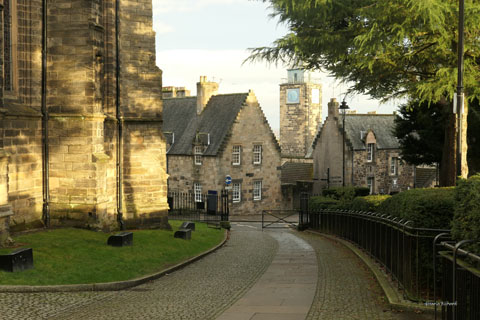Tangible remnants of the past
The town of Stirling was the first capital of Scotland and the main town of historic Stirlingshire (Stirling county). Stirling received its first charter as a royal burgh (see https://en.wikipedia.org/wiki/Royal_burgh) in the 12th century.
For the modern visitor, a stroll through the streets of Stirling Old Town and the Castle Wynd gives a feeling for how the town looked centuries ago.
Holy Rude is a historic church where James VI (son of Mary, Queen of Scots) was crowned in 1567. Behind the church is a series of graveyards overlooked by Stirling Castle.
Keeping Holy Rude to your left, if you were to turn around and face the other direction, on your left is Cowane Hospital. Quite convenient, having the hospital near the church and graveyard, don’t you think?
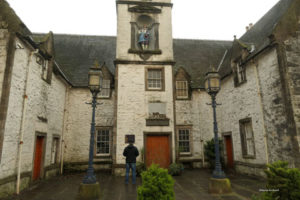
Actually Cowane Hospital was a mid-17th century almshouse for poor members of the merchant guide. A merchant and member of the Scots Parliament, John Cowane, donated most of the money to fund it.
A sign on the wall eloquently states:
“This hospitall was erected and largely provyded by John Cowane for the entertainment of decayed gild brethren.”
Decayed? “Hmm”, I thought. “Interesting word usage.”
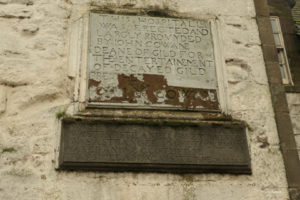
According to https://www.merriam-webster.com/dictionary/decay, the obsolete meaning of decay is “to cause to decay”, as in “infirmity that decays the wise” (William Shakespeare). I don’t think any 21st century person over the age of 30 would appreciate being described as “decayed”.
Other notable sites on the Castle Wynd and the Old Town include the Unicorn Mercat Cross, Argyll’s Lodging and the Old Town Jail.
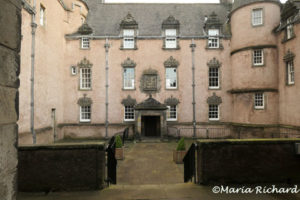
The Castle Wynd terminates at Stirling Castle. I found Stirling Castle to be more engaging than Edinburgh Castle.
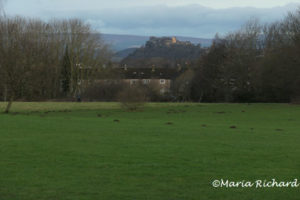
At Stirling Castle, you can try on medieval costumes and play period musical instruments. You can also see the King’s and Queen’s rooms as they might have appeared in the mid-16th century.
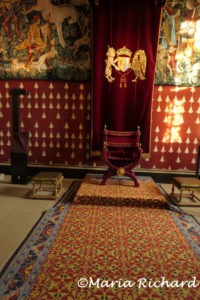
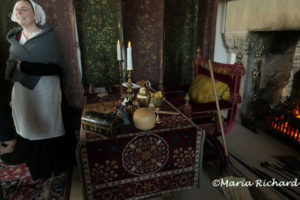
The castle kitchen is complete with mannequins dressed as kitchen staff. Speaking of kitchens, the cafe is worth the stop for a sweet treat or filling lunch.
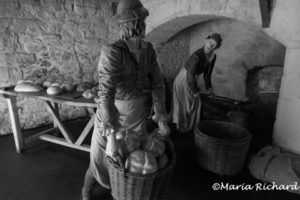
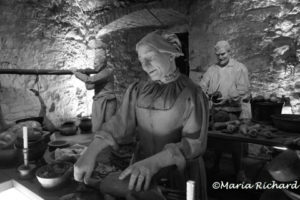
Two historic battles in the fight for Scottish independence were fought in Stirlingshire. You can visit Stirling Bridge on foot and imagine The Battle of Stirling Bridge (1297).
The battle of Bannockburn (1314) visitor center provides a quite a bit more to help you imagine the fight.
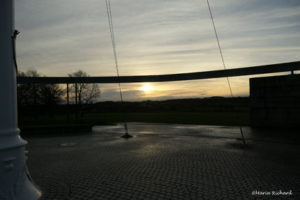
At the Battle of Bannockburn Visitor Center, you can transform into a knight by slipping on chain mail, a helmet, and grasping a replica sword in one hand and a shield in another.
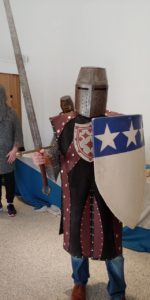
You can also transform to an archer if chain mail seems a bit heavy.
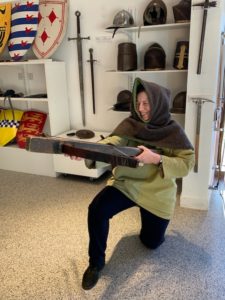
One of the highlights of your visit will be participating in a simulation based on the battle. I’m told the Scots always win. They certainly whipped the English during my visit.
Stirling churches and historical records
The history of churches in Scotland from the 16th to 18th centuries is tumultuous.
This article provides a narrative http://www.stirling-lhs.org/uploads/5/0/2/4/5024620/stirlings_churches_annotated.pdf.
Locating the actual congregation an ancestor belonged, was married, or were buried can be difficult. For example, one of my 7th great-grandfathers lived, married and died in St Ninians, Stirlingshire. James Wands died in 1760. Burial records place him on the “back of ?ngle Hugh Campbell stone closing a double grave”. The burial list for the St Ninians graveyard that I could find does not include any Wands or Campbells.
You can browse the database at Scotland Peoples and pay a small fee to download records of birth, baptisms, marriages, and deaths at https://www.scotlandspeople.gov.uk/.
Getting to Stirling
Stirling is a 57-minute train ride from Edinburgh Wavery Station. Buses run from the train station to Old Town, Stirling Castle, the Battle of Bannockburn Visitor Center and the Wallace Memorial. You can also choose to walk 15 minutes from the train station to Old Town or engage a taxi at the taxi stand outside the station.

